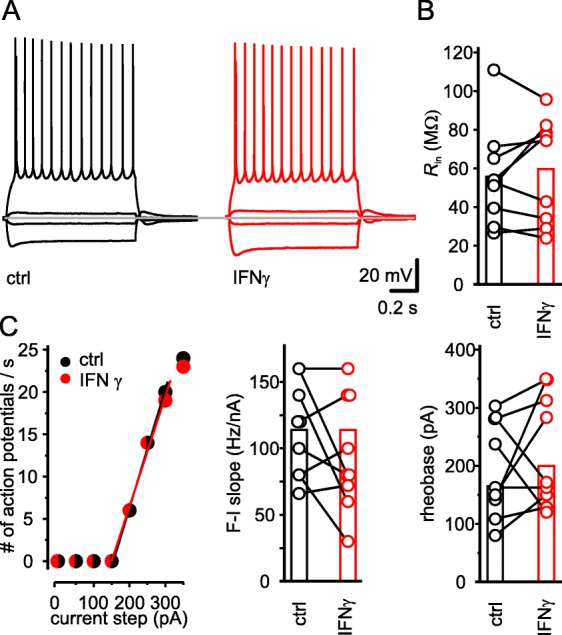Fig. 2.

IFN-γ does not acutely alter excitability of neocortical layer 5 neurons. Direct application of 1000 IU ml−1 IFN-γ for 20 min did neither change suprathreshold nor subthreshold excitability. a Example traces of a layer 5 pyramidal neuron before (black) and upon IFN-γ application (red) showing comparable firing and subthreshold behavior. Traces resemble voltage responses to rectangular current injections of − 300, − 50, 50, and 250 pA, respectively. The dotted gray line indicates a potential of − 72 mV. b Input resistance, as a measure of subthreshold excitability, remained unchanged upon the application of IFN-γ. c Action potential frequency of an example neuron plotted as a function of the input current (left). Population data reveal that neither F-I slope (middle) nor rheobase (right) was affected by IFN-γ. As two neurons showed overlapping F-I slopes, the corresponding dots in the line series are slightly dispersed from each other. Lines represent the fit through the linear part of the curve. Rs remained constant (Rs-ctrl = 7.6 ± 0.6 MΩ vs. Rs-IFN-γ = 7.3 ± 0.5 MΩ, n = 9; P = 0.23, paired t test) throughout the experiments. The average age of animals used for these current clamp experiments was P30 ± 2.8. In this and all following figures, columns indicate mean and open circles in line series resemble individual values before (black) and after (red) application of IFN-γ; *P < 0.05, **P < 0.01, ***P < 0.001
